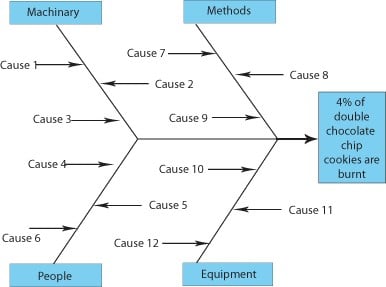To continuously improve operations and gain efficiency as a food manufacturer, you need management to understand your shop floor processes. You can make this happen with the lean technique of Gemba.
Gemba is a proven process in which mid- and high-level leaders walk the shop floor and observe/interact with front-line workers to get a feel for how operations run. In addition to informing management-level decisions, a “Gemba walk” represents an opportunity to hear employee concerns and look for areas of improvement.
This post discusses how Gemba can improve operations and decision-making in food manufacturing. (It’s the fourth post in our series on lean for food manufacturers; you can read the first three posts here, here, and here.)
How to Perform Gemba
Gemba means “where work occurs” in Japanese. Its focus on management connecting with shop floor employees where they work helps food manufacturers identify operational problems and sources of waste. Regular Gemba walks gauge productivity and uncover long-term issues that may be plaguing efficiency (and employee morale).
To ensure each Gemba walk yields actionable findings, management should apply the following guidelines:
- Have a specific purpose: Know why you’re taking each Gemba walk and have an idea regarding the issues you’re seeking.
- Be familiar with the area you’re visiting: Know how the area normally operates and the purpose it serves.
- Understand the overall process: You’ll have more credibility with front-line workers and get more valuable feedback when you’re familiar with the machinery, the importance of the tasks the machinery facilitates, and where each machine fits into the manufacturing process.
- Recognize exceptions: Ask front-line workers if what you see accurately depicts the normal state of processes. If it doesn’t, ask questions to uncover defects, inefficiencies, and other problems slowing employees’ work.
- Be prepared: Prepare a list of questions to extract quality responses and improve your understanding of the work. Ask what the task is, where it’s taking place, when it’s normally completed, why it’s done, and how it’s performed.
Extracting Value After a Gemba Walk
After a Gemba walk, reflect on what you learned by noting:
- The walk route
- What you saw on the walk
- Who provided insights
Then, note takeaways that may present opportunities for improvement. Typically, the most effective analysis involves splitting your findings into two categories – “value-add” and “waste elimination.” Don’t forget the eight wastes of lean manufacturing:
- Over production
- Over processing
- Too much inventory
- Defects/rework
- Waiting/delays
- Transporting
- Motion
- Loss of creativity
To understand the impact your improvement methods are having, leverage Pareto and/or trend charts to evaluate what you see as you take more walks over time. In addition, recognize that employees will stop providing valuable information if they feel it’s ignored by management, which means following up directly with workers who raised issues or provided key insights.
Conclusion
To ensure you maintain a true pulse on your operations regarding the manufacturing shop floor, you need to obtain feedback from front-line workers and see how they and their machines operate in your critical manufacturing processes. The best way to do that is via carefully planned and executed Gemba walks. When performed correctly, they yield valuable insights for eliminating waste and continuously improving operations. Please contact us for more information.










Leave a comment